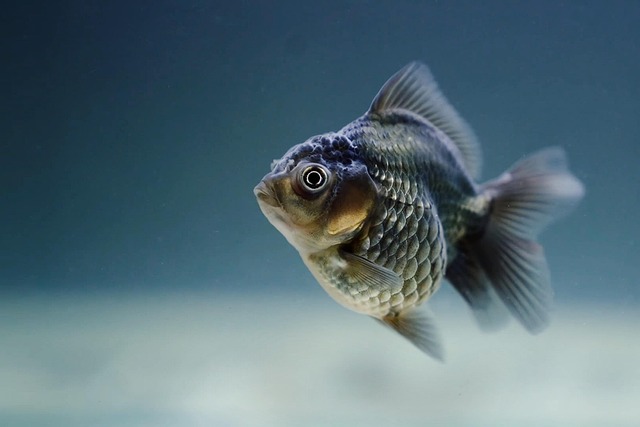Retail space aquariums pose unique challenges due to high visitor traffic and variable environmental conditions. Maintaining health requires precise temperature control, circulation, filtration, regular water changes, cleaning protocols, and tailored lighting for diverse species. Personalized maintenance routines, factoring tank size, species diversity, and water quality, are essential. Regular monitoring of key parameters, mechanical/biological filters, partial water changes, algae prevention, and routine tank care ensure optimal conditions for long-term aquatic ecosystem health and visual appeal.
In the dynamic landscape of retail, aquatic displays add a touch of serenity and biodiversity. However, maintaining their health over extended periods requires tailored strategies beyond routine cleaning. This article delves into professional maintenance plans designed specifically for retail space aquariums, exploring unique needs, customized schedules, and essential components vital to long-term success. From regular monitoring to proactive care, discover how these strategies ensure thriving aquatic environments that captivate customers.
Understanding Retail Space Aquariums' Unique Needs
Retail space aquariums, while often impressive displays of marine life, come with unique challenges that require tailored maintenance strategies. These aquatic environments are typically designed for high visibility and customer engagement in a retail setting, which can lead to specific needs not shared by residential or professional exhibits. The constant flow of visitors and varying environmental factors demand close monitoring to maintain water quality and the well-being of the inhabitants.
Understanding these nuances is vital. Retail space aquariums often house diverse species, necessitating precise temperature control, water circulation, and filtration systems. Regular partial water changes and strict cleaning protocols are essential to prevent nutrient buildup and the proliferation of harmful algae. Additionally, lighting requirements may differ significantly between species, affecting their feeding patterns and overall health.
Developing Customized Maintenance Schedules
Creating customized maintenance schedules is a key aspect of professional aquarium care, especially for complex retail space aquariums. Each tank and its inhabitants have unique needs that depend on various factors such as size, species composition, and water quality parameters. A comprehensive plan should address specific cleaning routines, water testing intervals, and treatment protocols tailored to the aquarium’s ecosystem.
For instance, a retail space aquarium with high biodiversity might require more frequent water changes and stringent monitoring of nitrogenous waste levels to maintain optimal water conditions. Customization ensures that every detail is considered, from vacuuming substrate to adjusting lighting schedules for plants, ensuring the long-term health and stability of the aquatic environment.
Essential Components of Long-Term Health Plans
Maintaining a healthy aquarium over the long term requires a comprehensive approach, especially in vibrant retail spaces where aquariums are center stage. Essential components include regular water quality monitoring and adjustments to maintain optimal parameters such as pH levels, ammonia, nitrite, and nitrate concentrations. Adequate filtration systems, including mechanical and biological filters, play a pivotal role in keeping the water clean and clear.
Additionally, scheduled partial water changes are crucial for removing accumulated waste and maintaining water clarity. Feeding schedules should be carefully managed to prevent overfeeding, which can lead to harmful algae blooms and nutrient imbalances. Regular tank maintenance, such as cleaning glass surfaces, trimming plants, and inspectin decorations, ensures the aquarium remains visually appealing while promoting a healthy ecosystem for the aquatic inhabitants.
Regular Monitoring and Proactive Care Strategies
Regular monitoring is a cornerstone of any successful maintenance plan for retail space aquariums. This involves daily checks to assess water quality parameters such as temperature, pH levels, and ammonia concentrations. By establishing consistent routines, aquarium specialists can quickly identify deviations from optimal conditions, allowing for immediate corrective actions. Proactive care strategies complement these monitoring efforts by implementing preventive measures. This includes regular water changes, cleaning filters, and topping up essential chemicals like calcium and magnesium. Such proactive approaches not only maintain water quality but also contribute to the overall well-being of aquatic ecosystems within retail spaces.
Maintaining a healthy aquarium requires a tailored approach, especially in the context of vibrant, high-traffic retail spaces. By understanding the specific needs of these environments, developing customized maintenance schedules, and implementing essential health plans, aquarium managers can ensure long-term success. Regular monitoring and proactive care strategies are key to preventing issues before they arise, ultimately fostering a thriving ecosystem within these bustling aquatic habitats. This comprehensive approach to professional maintenance ensures that retail space aquariums can captivate and educate visitors while maintaining optimal ecological balance.
